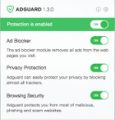What is ActivityElement
ActivityElement is supposed to be a program that will improve the browsing experience, but according to security researchers, this program is adware. Adware is a form of advertising malware. It is designed only to present numerous popup windows and/or annoying ads using intrusive and at times dangerous ways. Adware can also include other forms of malicious software. It can steal personal information from the machine and pass it on to third parties. Adware has also been the basis for hacking to gain access to the Apple Mac.
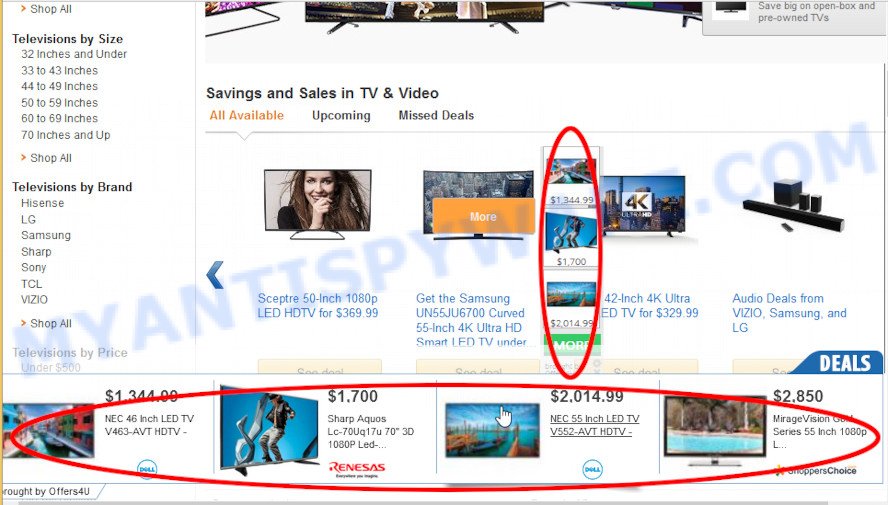
Unwanted ads
Does adware steal your data? Adware be able to collect marketing-type data about you which can be later transferred third party companies. You do not know if your home address, account names and passwords are safe.
Therefore it is very important to follow the step-by-step tutorial below sooner. The few simple steps will allow you to remove ActivityElement as well as clean your internet browser from any unwanted ads. What is more, the step-by-step instructions below will allow you get rid of other harmful software like unwanted toolbars and browser hijackers which can be installed onto MAC along with the adware.
How does ActivityElement get on your MAC
Many of the free programs out there install unwanted web-browser toolbars, browser hijackers, adware and potentially unwanted applications along with them without your knowledge. One has to be attentive while installing free software in order to avoid accidentally installing optional software. It’s important that you pay attention to the EULA (End User License Agreements) and choose the Custom, Manual or Advanced install type as it will typically disclose what third-party software will also be installed.
Threat Summary
| Name | ActivityElement, ActivityElement 1.0 app |
| Type | adware, potentially unwanted application (PUA), pop-ups, pop up advertisements, pop up virus |
| Symptoms |
|
| Removal | ActivityElement removal guide |
How to remove ActivityElement from Mac computer
As with removing adware, malware or potentially unwanted applications, there are few steps you can do. We suggest trying them all. If you do only one part of the tutorial, then it should be use malware removal utility, because it should delete adware software and stop any further infection. But to completely delete ActivityElement adware you’ll have to at least reset your web-browser settings such as startpage, search provider by default and new tab page to default state, delete all unwanted and suspicious applications, and remove adware software by malware removal tools. Read this manual carefully, bookmark it or open this page on your smartphone, because you may need to close your web-browser or reboot your MAC.
To remove ActivityElement, follow the steps below:
- Remove profiles created by ActivityElement
- Uninstall ActivityElement associated software by using the Finder
- Remove ActivityElement related files and folders
- Scan your Mac with MalwareBytes
- Remove ActivityElement from Safari, Chrome, Firefox
- How to stay safe online
- Finish words
Remove profiles created by ActivityElement
ActivityElement can make changes to the Mac system such as malicious changes to browser settings, and the addition of malicious system profiles. You need to check the system preferences, find and remove malicious profiles and ensure your settings are as you expect.
Click the System Preferences icon ( ![]() ) in the Dock, or choose Apple menu (
) in the Dock, or choose Apple menu ( ![]() ) > System Preferences.
) > System Preferences.
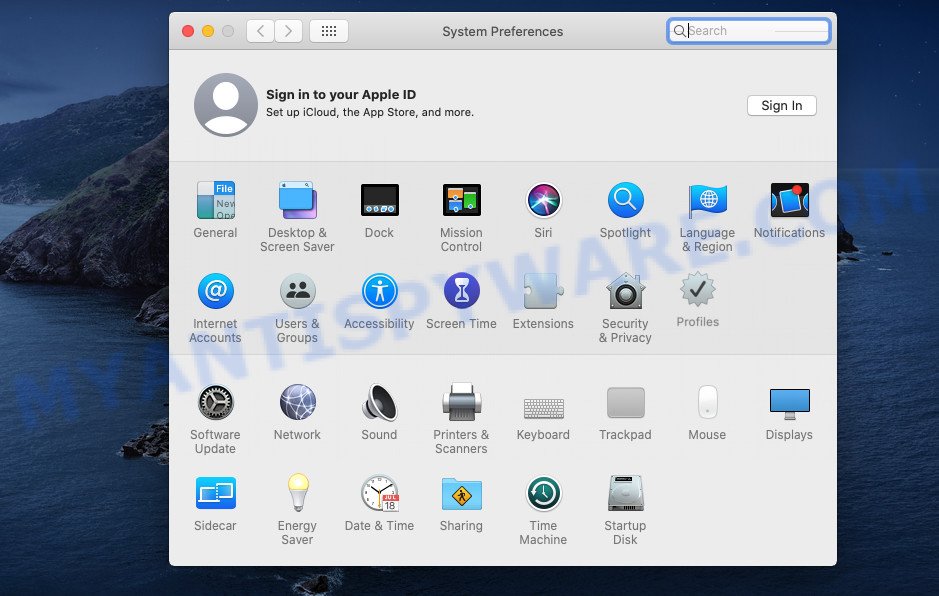
In System Preferences, click Profiles, then select a profile related to ActivityElement.
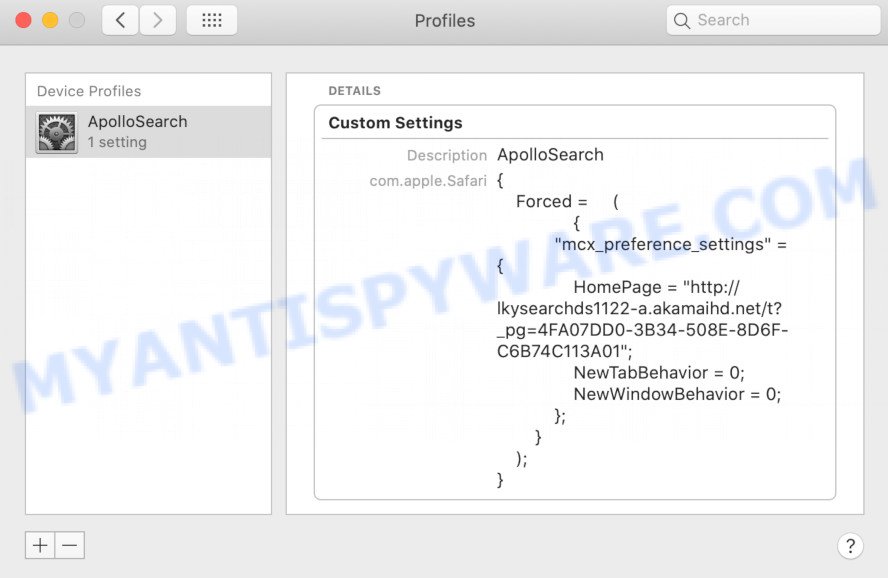
Click the minus button ( – ) located at the bottom-left of the Profiles screen to remove the profile.
Note: if you do not see Profiles in the System Preferences, that means there are no profiles installed on your Mac, which is normal.
Uninstall ActivityElement associated software by using the Finder
The next step in removing PUPs, browser hijackers and adware by yourself is to go into the Finder, then Applications. Take a look at the list of programs on your Mac computer and see if there are any suspicious and unknown programs. If you see any, you need to uninstall it. Of course, before doing so, you can do an World Wide Web search to find details on the program. If it is a adware, PUP and browser hijacker, you will likely find information that says so.
Open Finder and click “Applications”.
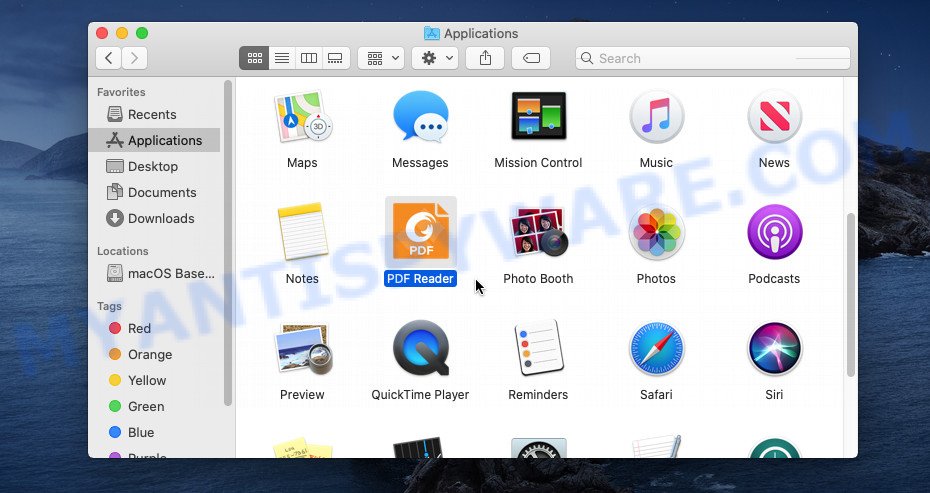
It will display a list of all software installed on your MAC. Scroll through the all list, and delete any suspicious and unknown applications. Right click to dubious program and choose “Move to Trash”. Another solution is drag the application from the Applications folder to the Trash.
Most important, scroll through the all list, and move to trash any unknown applications. Don’t forget, choose Finder -> Empty Trash.
Remove ActivityElement related files and folders
Now you need to try to find ActivityElement related files and folders, and then delete them manually. You need to look for these files in certain directories. To quickly open them, we recommend using the “Go to Folder…” command.
Click on the Finder icon. From the menu bar, select Go and click “Go to Folder…”. As a result, a small window opens that allows you to quickly open a specific directory.

Check for ActivityElement generated files in the /Library/LaunchAgents folder

In the “Go to Folder…” window, type the following text and press Go:
/Library/LaunchAgents
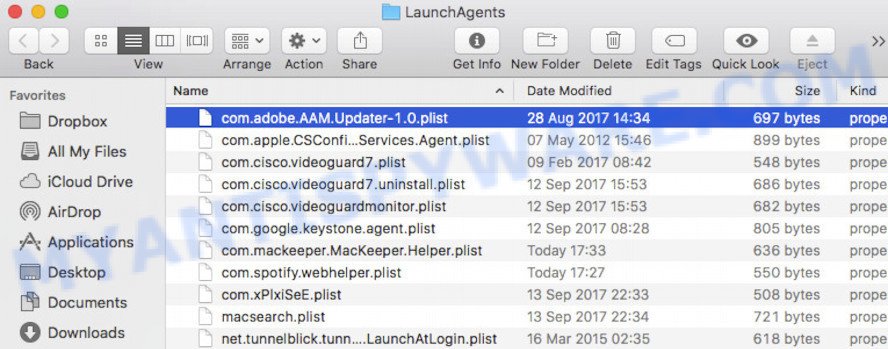
This will open the contents of the “/Library/LaunchAgents” folder. Look carefully at it and pay special attention to recently created files, as well as files that have a suspicious name. Move all suspicious files to the Trash. A few examples of files: macsearch.plist, com.machelper.plist, ActivityElement.plist, installapp.plist and search.plist. Most often, browser hijackers, adware software and PUPs create several files with similar names.
Check for ActivityElement generated files in the /Library/Application Support folder

In the “Go to Folder…” window, type the following text and press Go:
/Library/Application Support
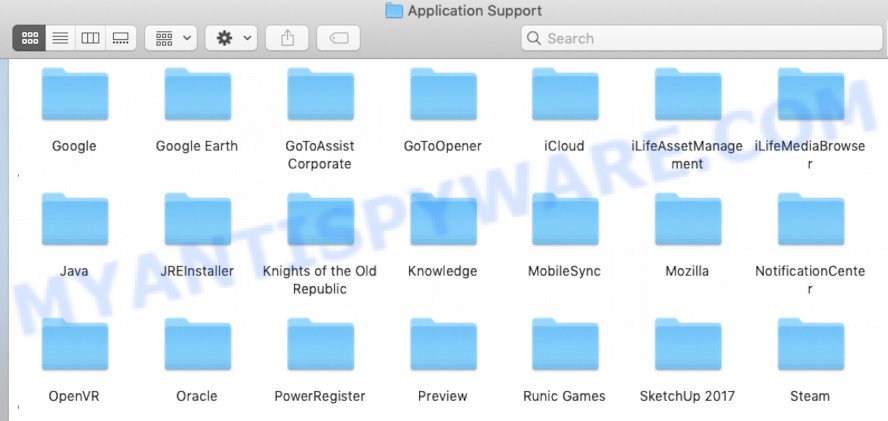
This will open the contents of the “Application Support” folder. Look carefully at its contents, pay special attention to recently added/changed folder. Move all suspicious folders to the Trash.
Check for ActivityElement generated files in the “~/Library/LaunchAgents” folder

In the “Go to Folder…” window, type the following text and press Go:
~/Library/LaunchAgents

Proceed in the same way as with the “/Library/LaunchAgents” and “/Library/Application Support” folders. Look for suspicious and recently added files. Move all suspicious files to the Trash.
Check for ActivityElement generated files in the /Library/LaunchDaemons folder
In the “Go to Folder…” window, type the following text and press Go:
/Library/LaunchDaemons

Carefully browse the entire list of files and pay special attention to recently created files, as well as files that have a suspicious name. Move all suspicious files to the Trash. A few examples of files to be deleted: com.ActivityElement.plist, com.machelper.plist, com.search.plist, com.macsearch.plist and com.installapp.plist. In most cases, adware, browser hijackers and PUPs create several files with similar names.
Scan your Mac with MalwareBytes
If you are still having problems with the ActivityElement removal or just wish to scan your Mac occasionally for adware and other malicious software, then download MalwareBytes AntiMalware (MBAM). It’s free for home use, and detects and removes various unwanted programs that attacks your MAC or degrades MAC OS performance. MalwareBytes can delete browser hijackers, potentially unwanted programs, adware and toolbars as well as malware, including ransomware and trojans.
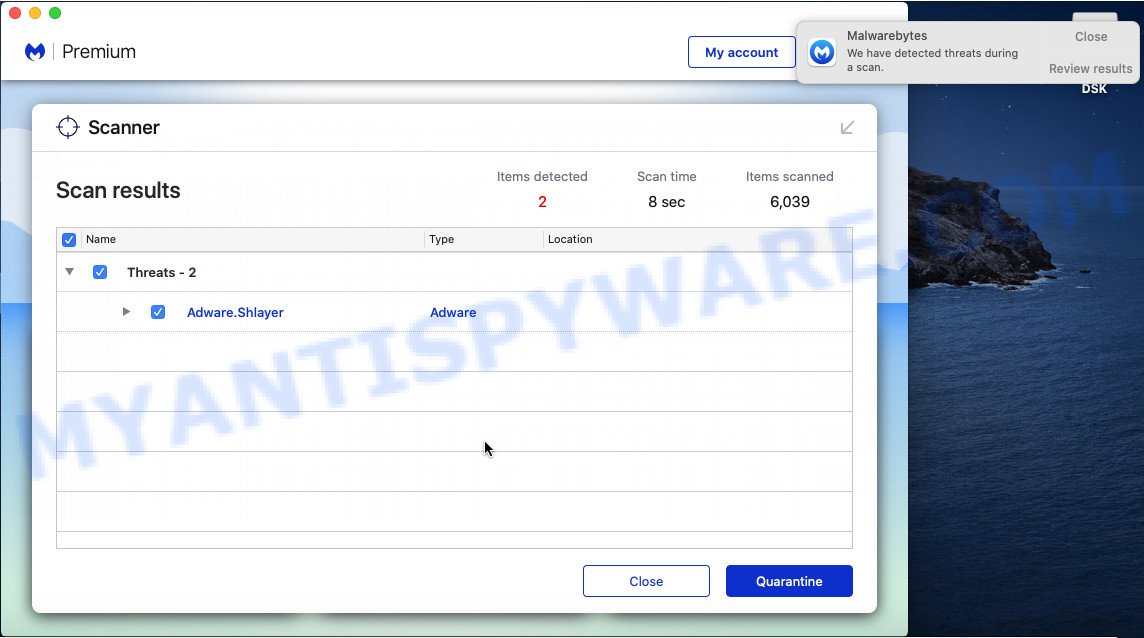
MalwareBytes Anti Malware can be downloaded from the following link.
21008 downloads
Author: Malwarebytes
Category: Security tools
Update: September 10, 2020
After the download is done, run it and follow the prompts. Click the “Scan” button . MalwareBytes AntiMalware application will scan through the whole MAC for the ActivityElement adware. When a threat is detected, the number of the security threats will change accordingly. Review the results once the utility has complete the system scan. If you think an entry should not be quarantined, then uncheck it. Otherwise, simply press the “Quarantine” button.
The MalwareBytes AntiMalware (MBAM) is a free application that you can use to remove all detected folders, files, malicious services and so on.
Remove ActivityElement from Safari, Chrome, Firefox
If you have ‘ActivityElement adware software’ removal problem, then remove unwanted add-ons can help you. In the steps below we’ll show you the way to delete harmful extensions without reinstall. This will also help to get rid of ActivityElement adware software from your web-browser.
You can also try to remove ActivityElement adware software by reset Google Chrome settings. |
If you are still experiencing issues with ActivityElement adware removal, you need to reset Firefox browser. |
|
How to stay safe online
One of the worst things is the fact that you cannot block all malicious web-pages using only built-in Windows capabilities. However, there is a program out that you can use to block unwanted internet browser redirects, advertisements and pop ups in any modern internet browsers including Safari, Google Chrome and Firefox. It’s named Adguard and it works very well.
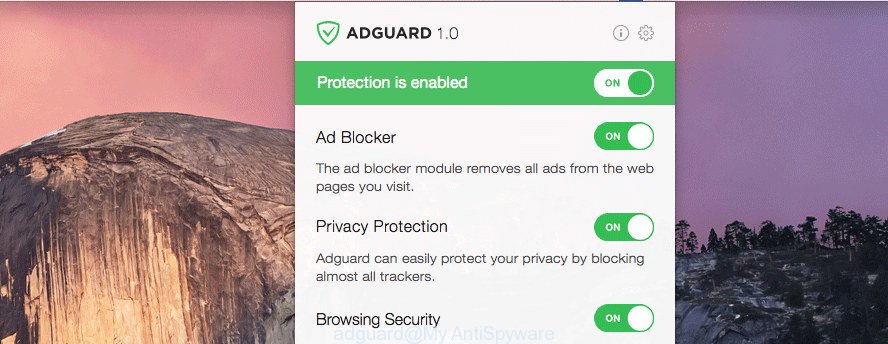
- AdGuard can be downloaded from the following link.
AdGuard for Mac download
3779 downloads
Author: © Adguard
Category: Security tools
Update: January 17, 2018
- After the downloading process is done, start the downloaded file. You will see the “Setup Wizard” program window. Follow the prompts.
- Once the setup is finished, click “Skip” to close the setup application and use the default settings, or click “Get Started” to see an quick tutorial which will help you get to know AdGuard better.
- In most cases, the default settings are enough and you don’t need to change anything. Each time, when you start your MAC OS, AdGuard will run automatically and stop undesired ads, block malicious and misleading webpages.
Finish words
Now your MAC system should be free of the ActivityElement adware. We suggest that you keep AdGuard (to help you stop unwanted pop-ups and undesired harmful web pages) and MalwareBytes (to periodically scan your MAC system for new malicious software, browser hijackers and adware). Make sure that you have all the Critical Updates recommended for Mac operating system. Without regular updates you WILL NOT be protected when new hijackers, malicious apps and adware are released.
If you are still having problems while trying to remove ActivityElement from your web-browser, then ask for help here.

